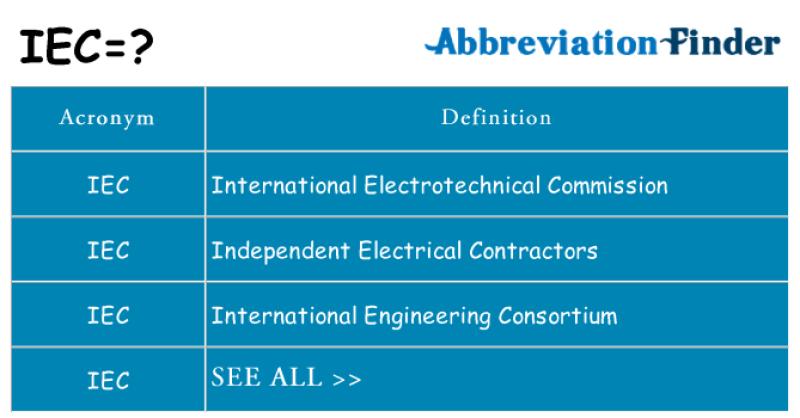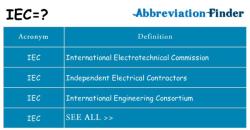What does NEMA and IEC stand for?
NEMA and IEC are organizations that develop and publish standards in the field of electrical and electronic engineering. They are responsible for creating guidelines and specifications to ensure the compatibility, safety, and efficiency of electrical products and systems. Here's an overview of each:
NEMA:
NEMA stands for the National Electrical Manufacturers Association. It is an American organization that represents and sets standards for the electrical manufacturing industry in the United States. NEMA standards cover a wide range of products, including motors, lighting, enclosures, wiring devices, and more.
NEMA provides technical standards, performance specifications, and guidelines that manufacturers follow when designing and producing electrical equipment. These standards help ensure consistency and interoperability among different manufacturers' products.
IEC:
IEC stands for the International Electrotechnical Commission. Unlike NEMA, IEC is an international organization that develops global standards for the electrical, electronic, and related technologies. The IEC sets standards that are adopted by many countries around the world.
IEC standards cover a broad spectrum of areas, including power generation and distribution, electrical appliances, electronic components, and renewable energy. These standards facilitate international trade and help ensure the safety and efficiency of electrical products on a global scale.
Key Differences:
Geographical Scope:
- NEMA primarily focuses on standards for the United States, while IEC provides international standards that are adopted by many countries globally.
Industry Representation:
- NEMA represents the interests of the American electrical manufacturing industry, whereas IEC is an international organization with members from various countries and regions.
Application:
- NEMA standards are often used in the United States, Canada, and some other countries following North American practices. IEC standards are more widely adopted internationally, especially in Europe, Asia, and other regions.
Voltage and Frequency Standards:
- NEMA standards may reflect the specific voltage and frequency standards used in North America (e.g., 120V, 60Hz). IEC standards consider a broader range of voltage and frequency standards used globally.
Certification Marks:
- NEMA and IEC may have different certification marks associated with compliant products. For example, NEMA-compliant products may bear the NEMA certification mark, while IEC-compliant products may have the IEC Conformity Assessment (IEC CA) mark.
While there are differences between NEMA and IEC standards, both organizations play crucial roles in setting standards that contribute to the safety, reliability, and interoperability of electrical products worldwide. Engineers, manufacturers, and regulatory bodies often refer to these standards to ensure the quality and performance of electrical equipment.
What do NEMA and IEC abbreviations stand for?
NEMA and IEC Stand for:
NEMA: National Electrical Manufacturers AssociationIEC: International Electrotechnical Commission
Here's a brief explanation of each:
NEMA:
- Founded in 1926, NEMA is a US-based trade association representing electrical equipment manufacturers.
- NEMA develops and publishes standards for various electrical products and systems, including motors, generators, industrial control equipment, lighting, and transportation equipment.
- NEMA standards are widely adopted in the United States and North America to ensure the safety, reliability, and interoperability of electrical equipment.
IEC:
- Founded in 1906, IEC is an international standardization organization headquartered in Geneva, Switzerland.
- IEC develops and publishes international standards for all electrical, electronic, and related technologies.
- IEC standards are used in nearly every country in the world and are essential for global trade and technical cooperation.
Key Differences:
- Scope: NEMA focuses primarily on the North American market, while IEC has a global scope.
- Membership: NEMA is a membership organization for US manufacturers, while IEC has member countries from all over the world.
- Standards: Both organizations develop and publish standards, but the specific standards covered by each differ.
Relationship:
- While both NEMA and IEC develop standards for electrical products, they also collaborate on various initiatives to promote global harmonization of standards.
- NEMA standards often serve as the basis for IEC standards, and vice versa.
Resources:
- NEMA website: https://www.nema.org/
- IEC website: https://www.iec.ch/homepage



